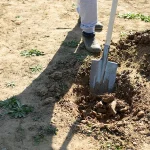- Business
Browse Business
- Technology
Browse Technology
Latest in Technology
Israel Boosts Air Defenses with $8.7 Billion U.S.-Backed Iron Dome Expansion
2 days ago
Light’s Hidden Magnetic Power May Lead to Faster, More Precise Optical Devices, Study Finds
3 days ago
Placental Errors May Explain Gestational Diabetes Risks, Study Finds
4 days ago
Pioneering Test Monitors Sea Urchins as Die-Offs Threaten Coral Reefs Worldwide
6 days ago
- Politics
Browse Politics
- Security
Browse Security
Latest in Security
Israel Confirms Killing Key Hamas Supply Chief in Gaza Airstrike
17 minutes ago
Israel Boosts Air Defenses with $8.7 Billion U.S.-Backed Iron Dome Expansion
3 days ago
Beer-Sheva Resident Indicted for Espionage on Behalf of Iranian Intelligence
3 days ago
Beer-Sheva Fires Spark Arson Probe After Night of Rescues
3 days ago
- Economy
Browse Economy
Latest in Economy
- Health
Browse Health
- Services
Government & Public Services
Travel & Transportation
Religious & Cultural
Information & Directories
Technology & Utilities
Jerusalem, 1 September, 2025 (TPS-IL) — The government of Israel approved a plan to encourage the accessibility of thousands of local authority properties for the construction of cellular antennas. The goal of the outline promoted by the Ministry of Communications is to improve cellular communications infrastructure in Israel and ensure high-quality and accessible reception for the entire public.
According to the Comptroller’s report, only about 7.7% of cellular transmission facilities in Israel are located on local authority property, and 59% of the authorities have not installed such facilities at all.
The Ministry of Communications is working to encourage authorities to increase the supply of properties for the construction of transmission facilities through an “off-the-shelf offer” under transparent and known terms in advance. Within this framework, up to 23 million Shekels ($6.8 million) will be allocated from the ministry’s budget for 2025 for incentives to authorities that meet the threshold conditions of the program, including reducing barriers and actually constructing transmission facilities on a significant scale.
The move is expected to improve the quality of cellular reception, support economic growth, and improve the well-being of residents. Improving cellular infrastructure is expected to indirectly contribute to increased labor productivity, the development of advanced digital services, and increased accessibility to public and business services.














